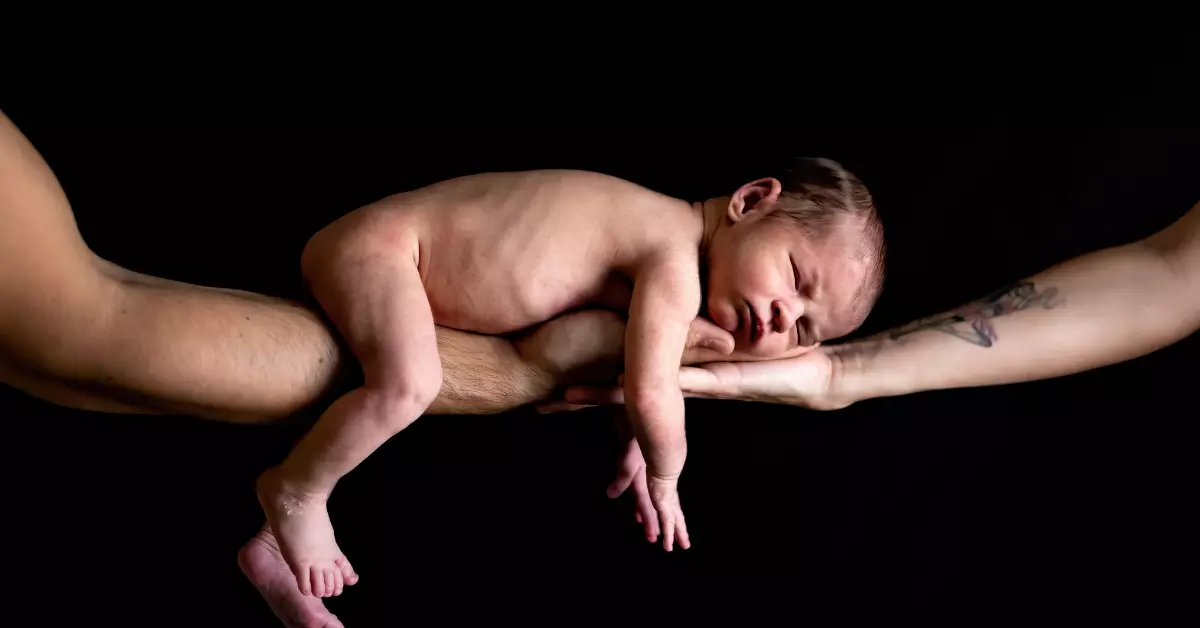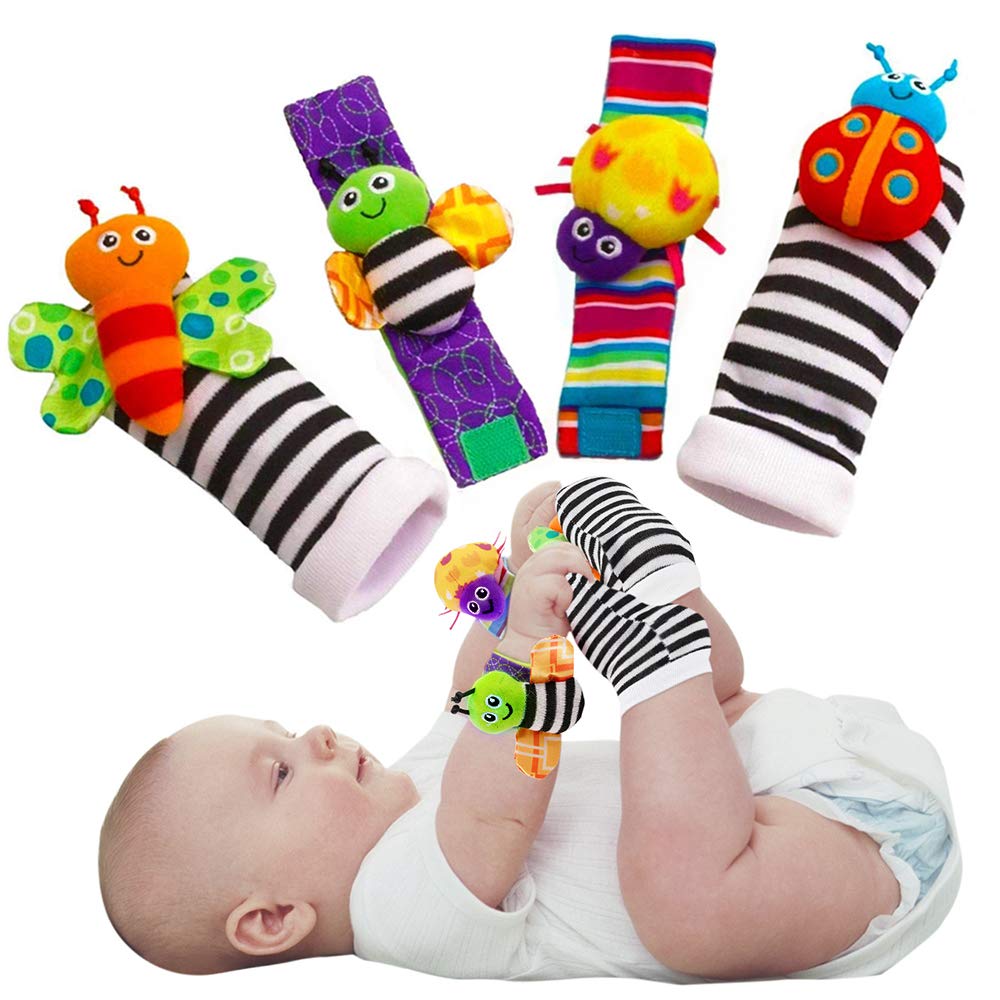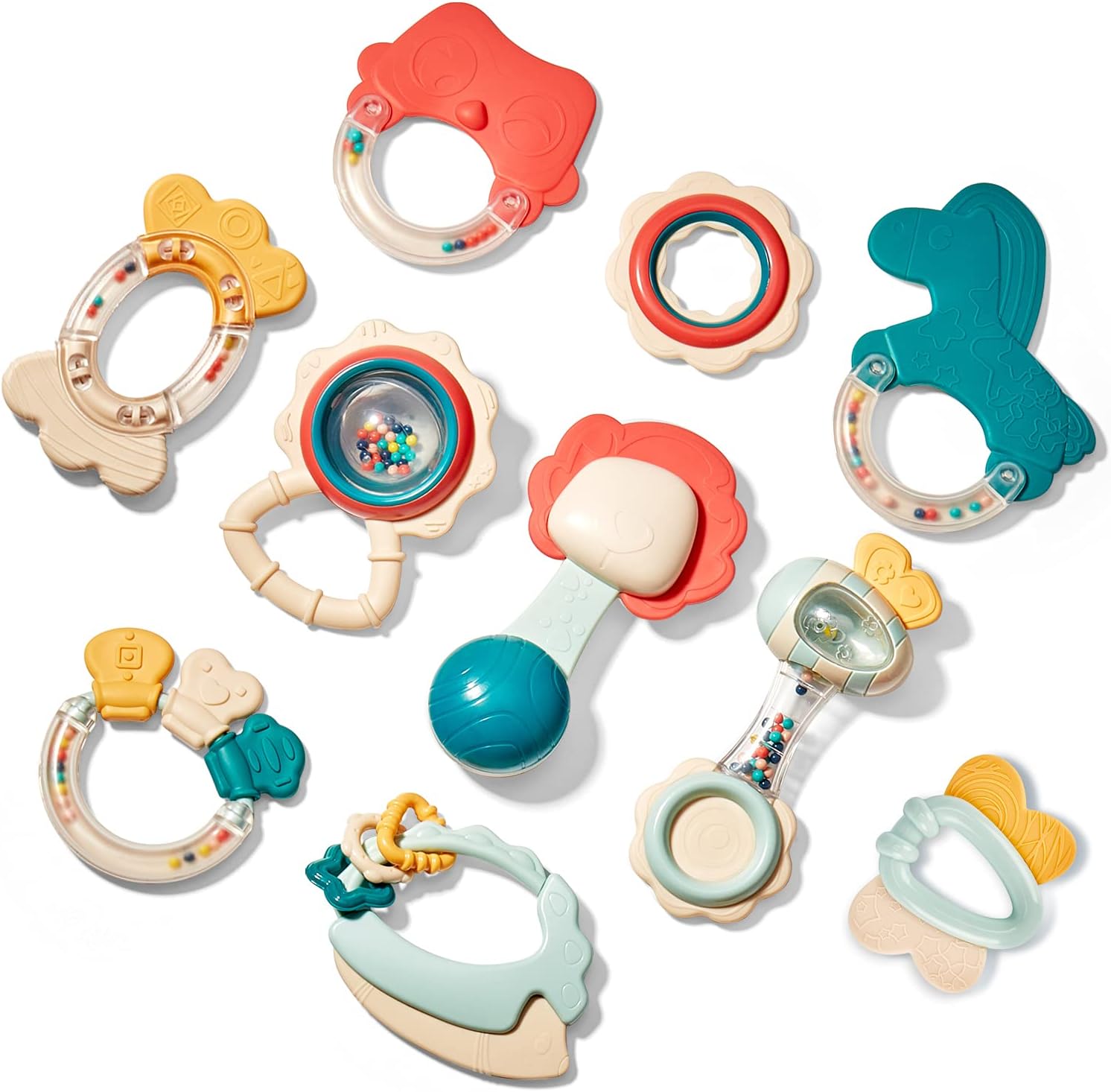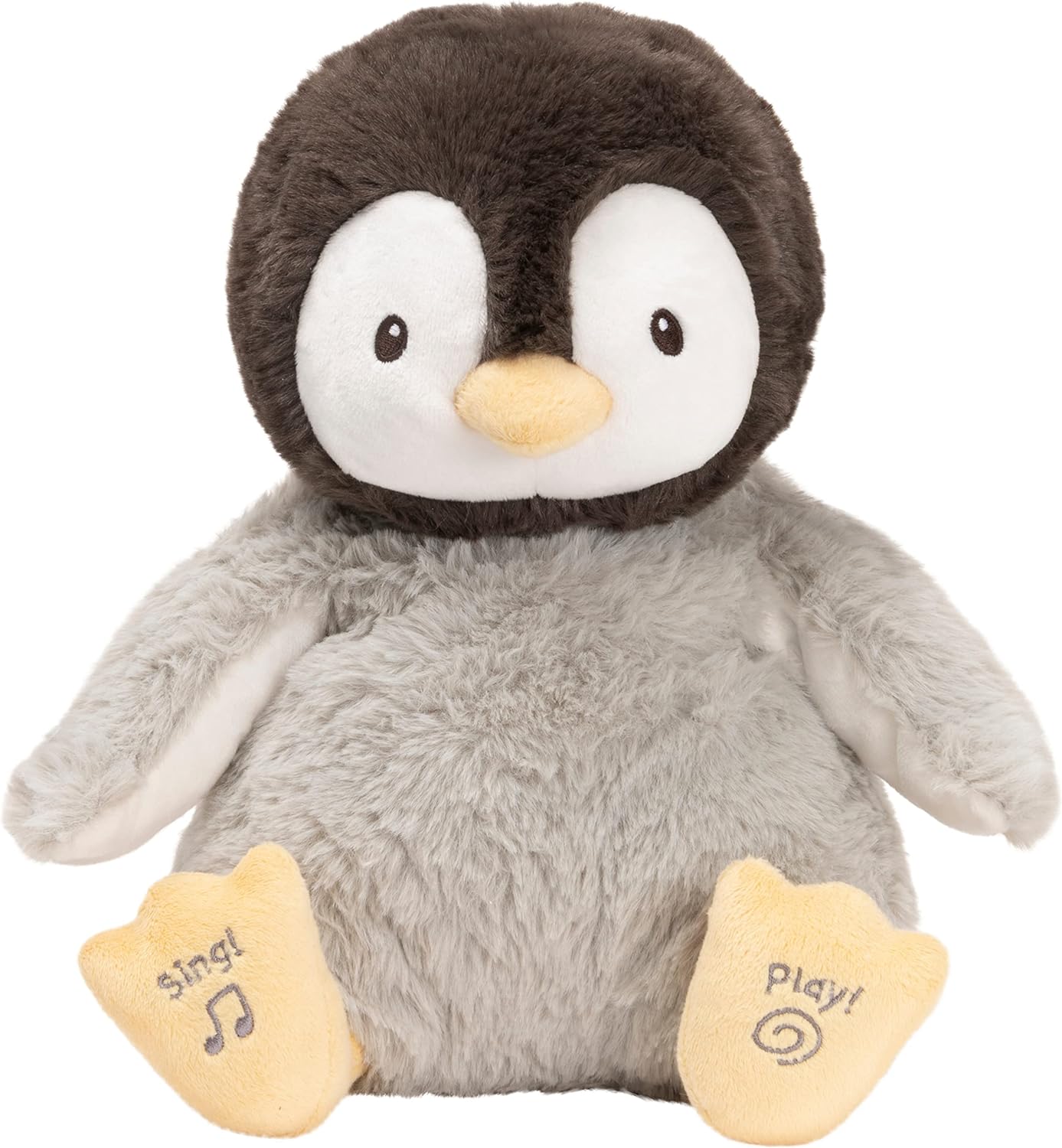If you’re a new parent, or soon-to-be parent, you’ve probably found yourself pondering over the question: “What’s the best sleeping arrangement for a newborn?” It’s a common concern among parents, as ensuring a safe and comfortable sleep environment for your little one is of utmost importance. In this article, we’ll explore different sleeping options for newborns, giving you the information you need to make an informed decision and provide your baby with a peaceful night’s rest. Let’s dive in!
Co-Sleeping vs. Separate Sleeping
When it comes to deciding whether to co-sleep with your baby or have them sleep separately, there are several factors to consider. One of the primary concerns for many parents is the safety of their little one. Co-sleeping can increase the risk of accidental suffocation or entrapment, especially if proper precautions are not taken. However, separate sleeping in a crib or bassinet also has its benefits and can provide a safe and secure sleep environment for your baby.
Safety Concerns
Co-sleeping with your baby can be a beautiful bonding experience, but it’s important to prioritize safety. To ensure a safe co-sleeping arrangement, it is essential to follow strict guidelines. These guidelines include using a firm mattress, avoiding pillows and blankets near the baby, and ensuring there are no gaps or spaces where the baby can become trapped.
Some parents choose to use co-sleepers or bedside cribs, which provide a separate sleeping space for the baby while still allowing for close proximity to the parent.
On the other hand, separate sleeping in a crib or bassinet can minimize safety concerns. Cribs offer an enclosed space with no risk of accidental suffocation or entrapment. Additionally, modern cribs are designed according to safety standards that regulate the spacing between slats and the height of the mattress.
Bassinets are another option for newborns, providing a cozy and secure sleeping space in the early months. Whichever option you choose, the most important consideration is to prioritize your baby’s safety.
Bonding and Comfort
Co-sleeping can foster a strong bond between the parent and the baby. The close proximity allows for easy access during nighttime feedings and provides a sense of security for the little one. Being able to soothe and comfort your baby immediately without having to get out of bed can be a significant advantage of co-sleeping.
On the other hand, separate sleeping can still promote bonding and comfort. Many parents find that having their baby sleep in a separate space nearby, such as a crib or bassinet, allows for a balance between closeness and independence. With a clear line between sleeping spaces, parents can still attend to their baby’s needs promptly while also maintaining their own sleep space and privacy.
Sleep Training
Sleep training involves teaching your baby to self-soothe and establish a regular sleep schedule. Some parents find that co-sleeping makes it more challenging to establish healthy sleep habits because the baby becomes accustomed to the constant presence and contact with the parent. However, proponents of co-sleeping argue that being close to the baby helps them develop a more natural sleep-wake cycle and promotes healthy sleep patterns.
Separate sleeping can provide an opportunity for sleep training and establishing a consistent sleep routine. With separate sleeping spaces, parents can implement sleep training methods, such as gradually allowing the baby to self-soothe and learn to fall asleep independently.
However, it is essential to remember that every baby is different, and what works for one may not work for another. Ultimately, it is up to the parent to decide which sleeping arrangement aligns with their values and their baby’s needs.
Bassinet or Crib?
Choosing between a bassinet and a crib is another important decision that parents face when creating a sleep environment for their newborn. Both options have their advantages and considerations, and understanding them can help you make an informed choice.
Advantages of a Bassinet
Bassinets are typically smaller and more portable than cribs, making them an excellent option for the early months when your baby needs to sleep in your room. They provide a cozy and secure sleeping space that can help newborns feel more comfortable and cocooned. Bassinets often have a rocking or swaying motion, which can help soothe babies to sleep and replicate the familiar sensations of the womb.
Another benefit of a bassinet is the closeness it allows between the baby and the parent. Having your baby within arm’s reach can make nighttime feedings easier and more convenient. Many bassinets come with removable Moses baskets or portable bassinet inserts, allowing you to move the sleeping space around the house during the day.
Advantages of a Crib
Cribs, on the other hand, offer a more long-term sleeping solution for your baby. They provide a dedicated sleeping space that can accommodate your growing child for several years. Cribs come in various sizes and styles, allowing you to choose one that fits your space and aesthetic preferences. They also offer the option of convertible cribs, which can be transformed into toddler beds or even full-size beds with the right conversion kits.
Safety is a significant advantage of cribs. They are designed to meet rigorous safety standards, ensuring that there are no gaps or spaces where the baby can get trapped. Modern cribs also have adjustable mattress heights, allowing you to lower the mattress as your baby becomes more mobile and starts to pull themselves up.
Safety Considerations
When considering either a bassinet or crib, safety should always be a top priority. Ensure that the chosen option meets the appropriate safety standards and regulations, with no loose or broken parts. The mattress should be firm and fit snugly against the sides of the bassinet or crib, and there should be no gaps where the baby’s head or body can become trapped. It is important to keep any blankets, pillows, or stuffed animals out of the sleep space to reduce the risk of suffocation.
Ultimately, the decision between a bassinet and a crib depends on your specific needs and preferences. Consider factors such as space availability, portability, and your long-term plans for the sleeping arrangement.

This image is property of images.unsplash.com.
Room Sharing vs. Nursery
Another consideration when creating a sleep environment for your baby is whether to have them room share with you or sleep in a separate nursery. Each option has its benefits, and understanding them can help you make an informed decision that best suits your family’s needs.
Benefits of Room Sharing
Room sharing involves having your baby sleep in the same room as you for the first few months or longer. There are several advantages to this arrangement, both for the parent and the baby. One of the most significant benefits is the ease of nighttime feedings. With the baby in close proximity, it is more convenient to attend to their feeding needs and soothe them back to sleep.
Room sharing can also promote a sense of security for the baby. They can hear and smell their parents, which can be comforting and help them feel safe. Research has also suggested that room sharing can reduce the risk of Sudden Infant Death Syndrome (SIDS), as the baby’s presence in the same room may help regulate their breathing and body temperature.
Benefits of a Separate Nursery
Having a separate nursery for your baby offers certain advantages as well. One of the main benefits is the privacy and space it provides for both the parent and the baby. With a separate nursery, the baby can have their own dedicated sleep environment, free from distractions or disturbances that may occur in the parent’s room, such as snoring or other nighttime movements.
Another benefit of a separate nursery is the potential for better sleep for both the baby and the parent. Babies can be sensitive to noises and movements during the night, and having their own space may help promote a more peaceful sleep environment.
Often parents may feel more at ease knowing they have a separate sleeping area for their baby, where they can ensure the room is baby-proofed and equipped with all the necessary essentials.
Practical Considerations
When deciding between room sharing and a separate nursery, practical considerations play a significant role. If you have limited space, room sharing might be the only feasible option in the early months. However, if you have the space and resources to create a safe and comfortable separate nursery, it can provide a peaceful sleep environment for both the baby and the parent.
Consider factors such as the layout of your home, the proximity of the nursery to your bedroom, and any other logistical considerations that may impact your decision. Ultimately, the most important aspect is to ensure that the chosen sleeping arrangement promotes a safe and restful sleep environment for your baby.
Choosing the Right Mattress
Selecting the right mattress for your baby’s sleep environment is crucial for their comfort and safety. There are several factors to consider when choosing a mattress, including firmness and support, breathability and temperature regulation, and hypoallergenic materials.
Firmness and Support
Babies require a firm mattress that provides adequate support for their developing bodies. A firm mattress helps reduce the risk of SIDS and suffocation by creating a stable sleep surface. When selecting a mattress, press down on the surface with your hand to ensure it springs back immediately. Avoid mattresses that conform too closely to your hand, as it may indicate a lack of firmness.
The mattress should also fit snugly within the crib or bassinet, with no gaps around the edges. If there are significant spaces between the mattress and the sides of the sleep surface, the baby may become trapped or injured. Ensure there are no loose or broken parts on the mattress, such as buttons or seams that could pose a choking hazard.
Breathability and Temperature
Another important consideration is the breathability and temperature regulation of the mattress. Babies are more susceptible to overheating, which is a risk factor for SIDS. Look for mattresses that allow adequate airflow and have built-in ventilation channels or small air holes. These features help ensure that the baby remains cool and comfortable throughout the night.
Additionally, consider the materials used in the mattress. Natural and organic materials such as cotton or wool can help regulate temperature and wick away moisture, promoting a comfortable sleep environment for your baby.
Hypoallergenic Materials
For babies with allergies or sensitivities, choosing a mattress made from hypoallergenic materials is vital. Look for mattresses that are free from common allergens such as latex or synthetic foams. Hypoallergenic mattresses are designed to minimize the risk of allergic reactions and skin irritations, providing a safe sleep surface for your little one.
It is essential to conduct thorough research, read reviews, and consider recommendations when selecting a mattress for your baby. Each baby is unique, and what works for one may not work for another. By prioritizing firmness, breathability, and hypoallergenic properties, you can ensure that your baby’s mattress provides optimal support and comfort.

This image is property of images.unsplash.com.
Swaddling or Sleep Sacks
Swaddling and sleep sacks are two common practices employed by parents to promote better sleep for their babies. Both methods have their benefits and considerations, and understanding them can help you make an informed decision for your little one.
Benefits of Swaddling
Swaddling involves wrapping your baby snugly in a blanket or swaddle cloth. This method mimics the feeling of being in the womb and can provide a sense of security and comfort for your baby. Swaddling helps prevent the startle reflex, which can often wake babies during sleep. By firmly wrapping the baby’s arms and legs, swaddling can help them feel secure and promote longer periods of uninterrupted sleep.
Swaddling may also help soothe colicky or fussy babies. The gentle pressure and containment provided by a swaddle can have a calming effect on babies by providing them with a comforting and familiar sensation.
Benefits of Sleep Sacks
Sleep sacks, also known as wearable blankets, are another popular sleep option for babies. Sleep sacks are designed to keep the baby warm without the need for loose blankets that can pose a suffocation risk. Sleep sacks come in various sizes and styles, allowing for a snug yet safe fit. With the baby’s arms and legs free to move, sleep sacks provide a sense of freedom while still providing a cozy and secure sleep environment.
One of the benefits of sleep sacks is the ease of use. Unlike swaddling, which requires a specific wrapping technique, sleep sacks can be quickly and easily put on. This convenience makes sleep sacks an excellent option for parents who want to provide a safe and comfortable sleep environment for their baby without the need for intricate swaddling techniques.
Considerations for Swaddling
While swaddling can be beneficial for many babies, there are some considerations to keep in mind. It is crucial to swaddle your baby correctly to ensure their safety. The swaddle should be snug but not too tight, allowing the baby’s hips to move freely. Tight swaddling can increase the risk of hip dysplasia, a condition that affects the development of the hip joints.
Additionally, it is essential to stop swaddling once your baby starts showing signs of rolling over. Swaddling can restrict the baby’s ability to move and turn, which can be a safety risk once they have the strength to roll onto their side or stomach. At this stage, transitioning to a sleep sack or other sleepwear is recommended.
Pacifier or No Pacifier
The use of pacifiers is a personal choice for parents, and there are various factors to consider when deciding whether to introduce a pacifier to your baby. Pacifiers can provide soothing and comfort, help prevent SIDS, but cautionary considerations should also be taken into account.
Soothing and Comfort
Pacifiers can be a valuable tool for soothing and comforting your baby. The sucking motion helps to satisfy the baby’s natural instinct to suckle and can provide a sense of calm and relaxation. Many babies find comfort in the rhythmic sucking provided by a pacifier, which can help them settle into sleep more easily.
Using a pacifier can also make it easier to wean your baby off other non-nutritive sucking habits, such as thumb-sucking. Pacifiers can be easily removed or replaced, whereas thumb-sucking may continue for a more extended period and have potential dental implications.
Preventing SIDS
Research has suggested that the use of pacifiers during sleep can help reduce the risk of Sudden Infant Death Syndrome (SIDS). The exact reasons for this association are not fully understood, but it is believed that the sucking motion helps keep the airway open and prevents the baby from entering a deep sleep, which is a risk factor for SIDS.
However, it is important to note that the American Academy of Pediatrics (AAP) advises that pacifiers should not be introduced until breastfeeding is well-established, usually around three to four weeks of age. Additionally, pacifiers should not be forced on babies who do not want them, and it is important to consult with your baby’s pediatrician for personalized guidance.
Cautionary Considerations
While pacifiers can be beneficial in many ways, there are also some cautionary considerations to keep in mind. The AAP advises against using pacifiers as a substitute for feeding or to delay feedings. Pacifiers should not be used as a sleep aid if the baby is not interested in using one or if the pacifier frequently falls out during sleep, as this may disrupt the baby’s sleep.
It is also important to be mindful of potential dependency on pacifiers. Extended pacifier use can lead to dental issues, such as misaligned teeth or an overbite. As your baby grows, it is recommended to gradually wean them off pacifier use to minimize any potential impact on their oral development.
Ultimately, the decision of whether to introduce a pacifier to your baby is a personal one. It is important to weigh the potential benefits against the cautionary considerations and consult with your baby’s healthcare provider for guidance specific to your baby’s needs.
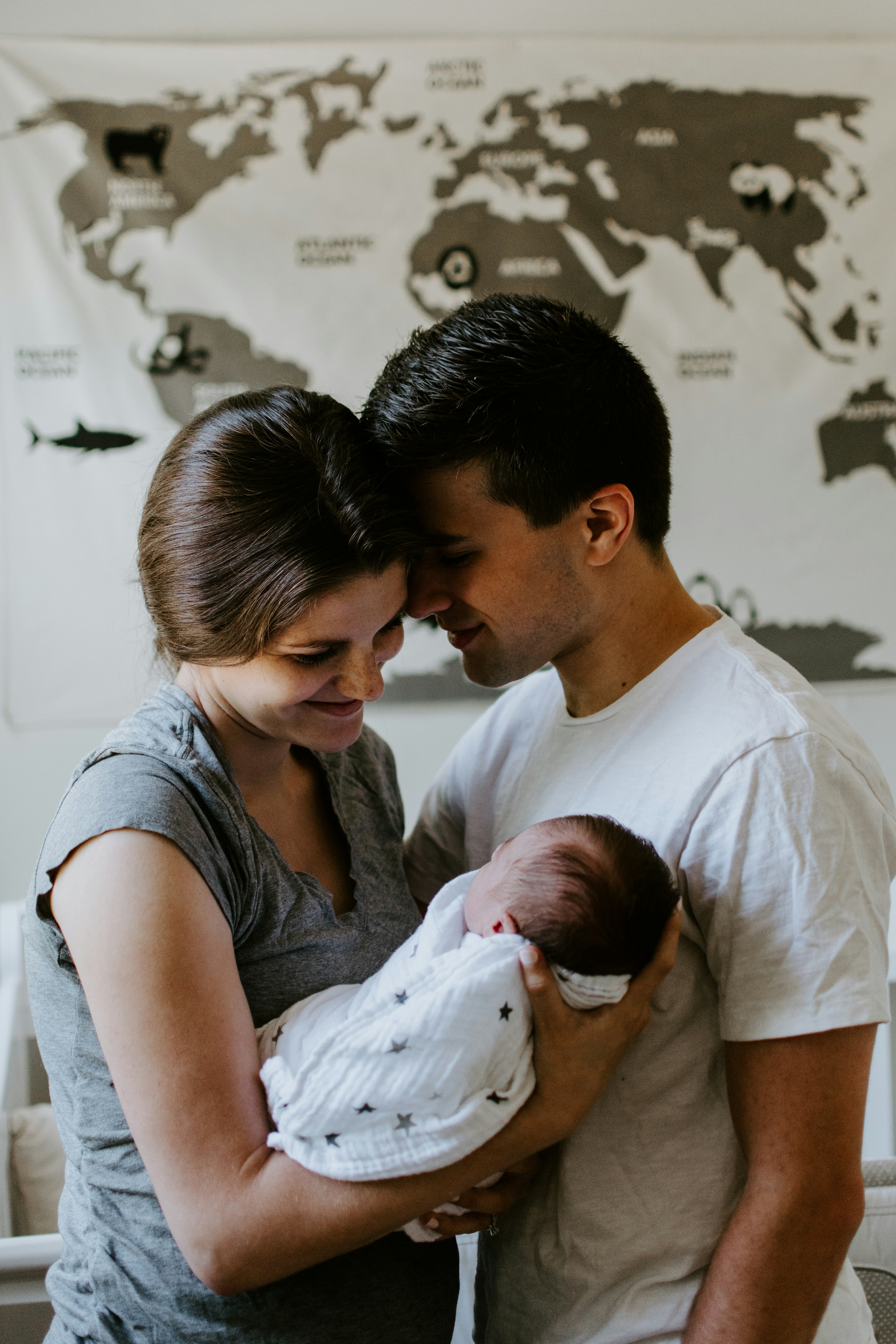
This image is property of images.unsplash.com.
Sleeping Position
The sleeping position is crucial for your baby’s safety and developmental needs. It is essential to prioritize back sleeping for safety while also providing opportunities for supervised tummy time and considering side sleeping under specific circumstances.
Back Sleeping for Safety
The safest sleeping position for your baby is on their back. Back sleeping significantly reduces the risk of Sudden Infant Death Syndrome (SIDS) and suffocation. When a baby sleeps on their back, it allows for proper air circulation and reduces the risk of their airway becoming blocked. The American Academy of Pediatrics (AAP) recommends placing babies on their backs for all sleep periods, including naps and nighttime.
To encourage back sleeping, ensure that the sleep environment is free from any loose bedding, blankets, or pillows that may pose a suffocation risk. Keep the mattress firm and avoid any sleep positioners or devices that claim to keep the baby in a specific position during sleep.
Tummy Time for Development
While back sleeping is essential for safety, supervised tummy time is equally important for your baby’s development. Tummy time refers to the time when the baby is placed on their stomach while awake and supervised. Tummy time helps strengthen the baby’s neck, shoulder, and back muscles, as well as promote good head control and coordination.
To incorporate tummy time into your baby’s routine, start with short intervals of a few minutes and gradually increase the duration as your baby becomes more comfortable. Place a soft blanket or mat on the floor and engage with your baby while they are on their tummy to provide additional stimulation and encouragement.
Side Sleeping Considerations
While back sleeping is the recommended position, there may be circumstances where side sleeping is considered, such as treating gastroesophageal reflux disease (GERD) or when a baby has difficulty breathing in the back position due to certain medical conditions. However, it is essential to consult with your baby’s healthcare provider before considering side sleeping to ensure it is appropriate for your baby’s specific situation.
If your baby’s healthcare provider recommends side sleeping, it is important to take proper precautions to ensure their safety. Place the baby on their side facing away from any pillows or loose bedding that may obstruct their airway. Additionally, avoid using positioners or wedges marketed to keep your baby in a specific position, as they may be a suffocation risk.
Always prioritize safety when it comes to your baby’s sleeping position. Following the recommendations for back sleeping, incorporating supervised tummy time, and seeking guidance from your baby’s healthcare provider will help provide a safe and supportive sleep environment for your little one.
White Noise and Other Sleep Aids
Creating a calming sleep environment can greatly contribute to your baby’s ability to fall asleep and stay asleep. White noise machines, rocking or swinging motion, and a calming environment can all be beneficial in promoting a peaceful sleep experience for your little one.
White Noise Machines
White noise machines produce a consistent, soothing sound that can help mask background noises and create a calm environment for sleep. The sound of white noise can be reminiscent of the familiar sounds your baby heard in the womb, which can have a soothing and calming effect.
When using a white noise machine, it is important to choose a machine specifically designed for nursery use. These machines often have volume control and a variety of sound options, allowing you to find the perfect sound level and type for your baby. Ensure that the machine is placed at a safe distance from the baby’s sleeping area and is not too loud or too close to their ears.
Rocking or Swinging Motion
Many babies find comfort in gentle rocking or swinging motions. The rhythmic movement can mimic the sensations they felt while being carried or rocked to sleep. Rocking or swinging motion can help calm an overstimulated or fussy baby and help them drift off to sleep more easily.
There are various ways to incorporate rocking or swinging motion into your baby’s sleep routine. Rocking chairs, gliders, or motion-sensing bassinets can provide a gentle and soothing movement. It is important to follow the manufacturer’s instructions and guidelines for safe use when using these devices.
Creating a Calming Environment
Creating a calming sleep environment is essential for promoting healthy sleep habits for your baby. Keep the room dimly lit or use blackout curtains to ensure a dark and peaceful atmosphere. Use gentle and relaxing colors in the nursery, such as soft pastels or neutral tones, to create a soothing ambiance.
Consider incorporating gentle and predictable routines into your baby’s bedtime. Establishing a consistent bedtime routine, such as reading a book, singing a lullaby, or cuddling, can signal to your baby that it is time to wind down and prepare for sleep. Avoid stimulating activities or screens close to bedtime, as they can interfere with the natural sleep-wake cycle.
By creating a calming environment with white noise, rocking or swinging motion, and a consistent bedtime routine, you can help set the stage for a restful and peaceful sleep for your baby.
Creating a Bedtime Routine
Establishing a consistent bedtime routine is essential for helping your baby transition from wakefulness to sleep. A bedtime routine signals to your baby that it is time to wind down and prepares them for a restful night’s sleep. By incorporating relaxing activities, avoiding stimulation, and establishing a consistent schedule, you can create a bedtime routine that promotes healthy sleep habits.
Establishing a Consistent Schedule
Consistency is key when it comes to a bedtime routine. By establishing a consistent schedule, your baby’s body will naturally become accustomed to a sleep-wake cycle, making it easier for them to fall asleep and stay asleep. Aim to have a consistent bedtime each night and wake time each morning, even on weekends or days off.
Start the bedtime routine about 30 minutes to an hour before the desired sleep time. This provides ample time for you to engage in relaxing activities and wind down, helping your baby transition from the busyness of the day to a calm and peaceful state.
Relaxing Activities
Incorporating relaxing activities into the bedtime routine can help signal to your baby that it is time to unwind and prepare for sleep. Activities such as a warm bath, gentle massage, or quiet playtime can help your baby relax and release any tension or restlessness.
Reading a book together is a wonderful activity for both bonding and relaxation. Choose books with calming or soothing themes and read in a soft, gentle voice. This not only entertains your baby but also helps create a tranquil atmosphere.
Avoiding Stimulation
It is important to avoid stimulating activities or screens close to bedtime, as they can interfere with the natural sleep-wake cycle. Stimulating activities, such as rough play or watching stimulating television shows, can make it more challenging for your baby to calm down and transition to sleep.
Limit screen time at least an hour before bedtime, as the blue light emitted by screens can disrupt the production of melatonin, the hormone that regulates the sleep-wake cycle. Instead, opt for quiet activities such as cuddling, singing lullabies, or engaging in peaceful play.
By incorporating relaxing activities, avoiding stimulation, and establishing a consistent schedule, you can create a bedtime routine that promotes a calm and peaceful transition to sleep for your baby.
Transitioning to a Toddler Bed
As your baby grows older, there will come a time when they outgrow their crib and are ready to transition to a toddler bed. Recognizing the signs of readiness, choosing the right bed, and making the transition smooth are essential aspects of this milestone.
Signs of Readiness
Every child is unique, and there is no set age at which all children are ready to transition to a toddler bed. However, there are some signs that indicate your child may be ready for the transition. These signs include climbing out of the crib, expressing interest in a big kid bed, or showing signs of feeling confined or restricted in the crib.
It is important to ensure that your child has good sleep habits established before transitioning to a toddler bed. They should be able to fall asleep independently, stay in bed throughout the night, and wake up well-rested in the morning. If your child is still struggling with these aspects, it may be best to wait a little longer before transitioning to a toddler bed.
Choosing the Right Bed
When choosing a toddler bed, there are various options to consider. Toddler beds are designed to be lower to the ground to prevent falls and often feature guardrails to provide additional safety. Many toddler beds come in fun and appealing designs that can help make the transition more exciting for your child.
Convertible cribs are another option to consider. These cribs can be transformed into toddler beds with the addition of a conversion kit, allowing your child to continue using the same bed as they grow older. This can be a cost-effective and space-saving option for many families.
Making the Transition Smooth
To make the transition to a toddler bed smoother, involve your child in the process. Let them help pick out the bed or the bedding and make it an exciting and positive experience. Consider incorporating familiar elements from their crib, such as their favorite stuffed animal or blanket, to provide a sense of continuity and comfort.
Ensure that the new sleep space is safe, cozy, and inviting. Remove any potential hazards from the room and make sure the bed is set up correctly. Some children may benefit from a gradual transition, starting with naps in the toddler bed before transitioning to sleeping in it full-time.
Be prepared for some resistance or adjustment during the transition. It is natural for children to feel a sense of loss or anxiety when leaving their familiar crib. Provide reassurance, comfort, and consistency during this time, and be patient as your child adjusts to their new sleep space.
The transition to a toddler bed is an exciting milestone for both you and your child. By recognizing the signs of readiness, choosing an appropriate bed, and making the transition as smooth and positive as possible, you can help ensure a successful transition and continued good sleep habits for your little one.

